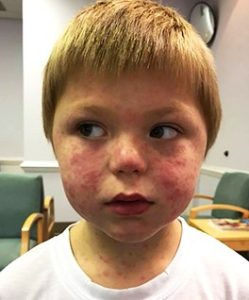As the Earth’s climate continues to warm year after year, experts are noticing an alarming trend: an increase in the population of bugs and ticks. This isn’t just an inconvenience—it’s becoming a serious health concern. For example, in the United States alone, tick-borne illnesses have tripled over the last 15 years, according to a recent study. While health professionals often urge people to wear long sleeves and pants when venturing outdoors to reduce the risk of tick bites, that’s not always a realistic solution—especially during the hot, sticky months of summer. After all, who wants to bundle up in heavy clothing when the sun is shining and temperatures are soaring? Staying inside isn’t always a great alternative either, especially after a long winter when most of us are eager to enjoy some much-needed time outdoors.

But despite the temptation to be carefree, it’s important to remain cautious. Ignoring the potential danger of tick bites can lead to serious consequences, and no one knows that better than the family of five-year-old Mason McNair. What happened to Mason is a powerful reminder of how vigilant we need to be when it comes to ticks, particularly with children. His story is not only heartbreaking—it’s also far more common than many people realize.
It all began on a seemingly ordinary day when Mason was out enjoying nature with his grandparents. They were outside having fun, soaking up the sun and spending quality time together. But later that day, as Mason’s grandmother was giving him a bath, she noticed something unusual. There was a tick lodged in his belly button. She carefully removed it, following all the right steps. Still, something didn’t seem right. The area where the tick had been was red and swollen, and out of an abundance of caution, they took Mason to a doctor. He was prescribed antibiotics and sent home.
Unfortunately, things quickly took a turn for the worse. Mason developed a rash, came down with a fever, and began experiencing stomach pain. Initially, the rash looked like a typical heat rash. After all, the weather had been hot that weekend, and the family had been outside for hours. His mom, Danielle McNair, figured the symptoms were related to the heat or maybe even a reaction to the medication. But soon, the rash spread rapidly across his body, growing more severe by the day.
Despite the worsening condition, the family doctor assured them that there was nothing to worry about. The red spots, he claimed, were just a delayed reaction to the antibiotics. But Danielle wasn’t convinced. Something about the situation didn’t sit right with her. Trusting her instincts, she turned to the internet to begin researching on her own. She even called her sister, a veterinarian, hoping to get some insight. The more she learned, the more convinced she became that her son had contracted a tick-borne illness that the doctor had overlooked.
Danielle began to suspect that Mason was suffering from Rocky Mountain spotted fever (RMSF), a serious disease transmitted by ticks. While many people are familiar with Lyme disease and tick-borne encephalitis (TBE), RMSF is less well known—even though it can be just as dangerous. The symptoms matched Mason’s exactly: fever, rash, and severe discomfort. Finally, Danielle insisted that the doctors investigate this specific disease.
As it turned out, she was right. Mason had indeed contracted RMSF, a bacterial infection that requires specific antibiotic treatment. The name “Rocky Mountain spotted fever” might suggest the illness only affects people in mountainous regions, but that’s a misconception. In reality, cases have been reported all across the United States and even in other parts of the world.
RMSF can be deadly if not treated promptly. While early symptoms may seem mild or mimic those of other common conditions, the disease can escalate quickly. Thankfully, Mason received the right treatment in time and made a full recovery. But not all children are so lucky. Back in June 2017, a two-year-old girl tragically died from the same disease after doctors failed to diagnose her correctly.
Dr. Paige Armstrong, a medical epidemiologist at the Centers for Disease Control and Prevention (CDC), explains that RMSF can be particularly tricky to identify in children because their symptoms often differ from those seen in adults. This can lead to frequent misdiagnosis and delayed treatment, sometimes with fatal consequences.
Danielle is now determined to use her family’s experience to raise awareness about this potentially deadly illness. She wants parents everywhere to understand the risks and, more importantly, to trust their instincts when it comes to their children’s health. “If I hadn’t done my own research and continued to push for answers, we would be in a completely different situation with my son,” Danielle told USA Today. “And that is scary. That is so scary.”
Her message is loud and clear: parents need to be advocates for their children. She urges moms and dads to ask questions, do their own research, and speak up if something doesn’t feel right. Doctors are human too—they don’t always get it right. That’s why it’s so important for parents to remain vigilant and proactive.
Today, Mason is back to being a happy, healthy little boy. But his story is a powerful reminder of how quickly a tick bite can turn into a medical emergency. It underscores the importance of checking children thoroughly after outdoor play and knowing the signs of serious tick-borne illnesses like RMSF.
Please take a moment to share this story with your friends and family. The more people who know about RMSF, the more likely we are to catch it early and save lives. Knowledge truly is power—especially when it comes to protecting our kids from invisible threats like ticks.





